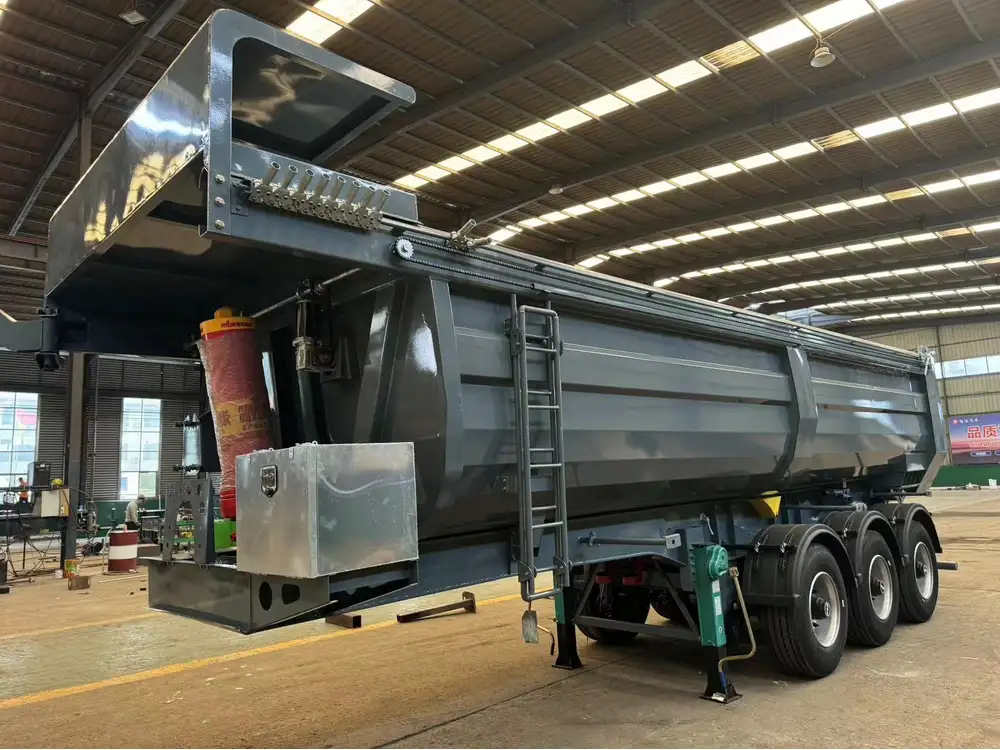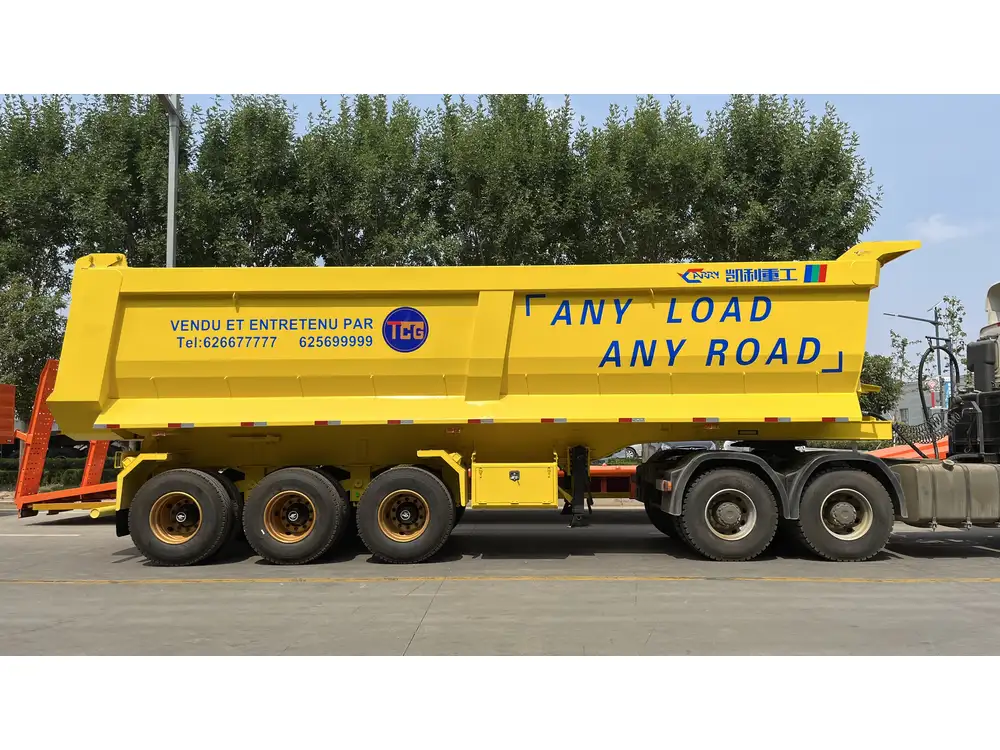The braking system of a semi-trailer is one of its most critical components, ensuring safety and control during transport. In situations where the air brake system fails or requires manual intervention, understanding how to release semi-trailer brakes manually is essential. This detailed guide provides truck operators and maintenance personnel with step-by-step instructions, tips, and essential information on safely and effectively releasing semi-trailer brakes.
Understanding Semi-Trailer Brake Systems
Before delving into the process of manually releasing the brakes, it’s crucial to comprehend the essential workings of semi-trailer brake systems.
Types of Brakes in Semi-Trailers
Air Brakes
- Description: Utilizes compressed air to activate the braking mechanism.
- Components: Includes air tanks, compressors, and brake chambers.
- Advantages: Offers strong stopping power and is commonly used in heavy-duty vehicles.
Electric Brakes
- Description: Operates through electrical signals and magnets.
- Components: Involves a brake controller and electric brake drums.
- Advantages: Provides better control and quicker response in certain conditions.
Hydraulic Brakes
- Description: Utilizes hydraulic fluids to apply pressure to brake pads.
- Components: Comprises master cylinders and brake lines.
- Advantages: Smooth operation with a powerful stopping force.

Why You May Need to Manually Release the Brakes
- Compressed Air Loss: Accidental separation from the tractor or air system failure can lead to loss of pressurized air, causing brakes to engage.
- Maintenance or Repairs: During maintenance, it’s sometimes necessary to manually release brakes to move a trailer safely.
- Emergency Situations: In emergencies, manually releasing the brakes may be the only option to prevent accidents.
Step-by-Step Guide to Manually Release Semi-Trailer Brakes
Executing the manual release of semi-trailer brakes requires a methodical approach to ensure safety. Here’s a detailed, step-by-step guide to follow:
Step 1: Prepare for Release
- Safety First: Before attempting to release the brakes, ensure that your vehicle is parked on a level surface and is secured with wheel chocks.
- Inspect the Environment: Ensure there are no obstructions around the trailer, and check the area for other moving vehicles.

Step 2: Access the Brake System
- Locate the Brake Valve: Find the spring brake release valve, usually situated near the parking brake lever.
| Component | Description |
|---|---|
| Brake Valve | Responsible for controlling the braking mechanism. |
| Release Arm | Lever used to manually disengage brakes. |
Step 3: Connect Air Supply (If Applicable)
If your trailer is equipped with an air brake system and you have access to a pressed air source:
- Attach an air supply to the trailer’s gladhand fitting, ensuring a secure connection.
- Check the pressure gauge; it should register a minimum of 90 PSI for a proper release.
- This solution may save time, as the air pressure assists in disengaging the brakes.
Step 4: Manual Release Procedure

For Air Brake Systems:
- Identify the Release Arm: Locate the manual release arm (often painted red or marked).
- Pull the Lever: While applying moderate pressure on the lever:
- Pull the release arm toward you.
- Feel for a click or audible sound indicating that the brakes have released.
- Confirm Release: Inspect the trailer wheels to ensure they are no longer locked. Gently roll the tires to confirm free movement.
For Electric Brakes:
- Access the Brake Controller: Depending on the design, locate the brake controller inside the tractor cab.
- Activate Manual Release: Many electronic systems feature a manual override; consider pressing the button to apply power to the brakes temporarily.
- Verify Wheel Movement: Check the trailer wheels for free movement.
Step 5: Re-Engage the Brakes
Once adjustments or movements are complete, ensure that the brakes are re-engaged following these instructions:
- Return the Release Arm: Gently push back the manual release arm until it clicks into place.
- Disconnect Air Supply: If used, safely detach the air supply and secure the glad hand.
- Conduct a Quick Safety Check: Walk around the trailer, confirming that all lights are operational and there are no potential hazards.

Common Issues and Troubleshooting
While manually releasing semi-trailer brakes, operators may encounter various issues. Here are some common scenarios and how to address them:
Brake Will Not Release
Possible Causes
- Low air pressure in the system.
- Mechanical obstruction or failure in the brake components.
Solutions
- Check air supply and charge the tank to the appropriate pressure.
- Inspect brake components for any physical damage or debris obstructing operation.
Uneven Brake Pressure
Possible Causes
- Air leaks in the brake system.
- Faulty brake chambers or release arms.
Solutions
- Inspect for air leaks and repair as needed.
- Test the functionality of individual brake chambers.

Frequent Brake Engagement
Possible Causes
- Faulty tractor-trailer connection.
- Damaged or worn-out brake system components.
Solutions
- Inspect the gladhand connection and ensure proper seating.
- Replace any worn or defective parts promptly.
Tips for Maintaining Your Semi-Trailer Brake System
To reduce the likelihood of needing to manually release brakes, regular maintenance is essential. Here are practical maintenance tips:
- Schedule Regular Inspections: Conduct thorough inspections of the braking system at regular intervals, especially before long hauls.
- Check Air Pressure: Ensure air tanks are adequately filled and free of moisture.
- Maintain Components: Replace worn brake linings, seals, and hoses promptly to maintain optimal braking performance.
- Document Maintenance Records: Keep detailed records of inspections, repairs, and maintenance procedures for future reference.
Conclusion
Manually releasing semi-trailer brakes is a vital skill for operators, ensuring safety and moving capability in various situations. By following this comprehensive guide, operators can confidently navigate the process, from understanding brake systems to troubleshooting common issues. Moreover, maintaining awareness of best practices enhances safety and operational efficiency, paving the way for a successful haul.

Additional Resources
To deepen your understanding and enhance skill sets, consider the following resources:
- Regulatory Guidelines: Review Federal Motor Carrier Safety Administration (FMCSA) regulations related to commercial vehicle operations.
- Manufacturer Manuals: Always refer to the specific manufacturer’s manual for detailed instructions relevant to your semi-trailer model.
- Training and Certification: Participate in training sessions and certifications focused on semi-trailer brake systems and safety protocols.
By applying these insights and instructions, you can optimize your operations and ensure compliance with safety standards on the road.



